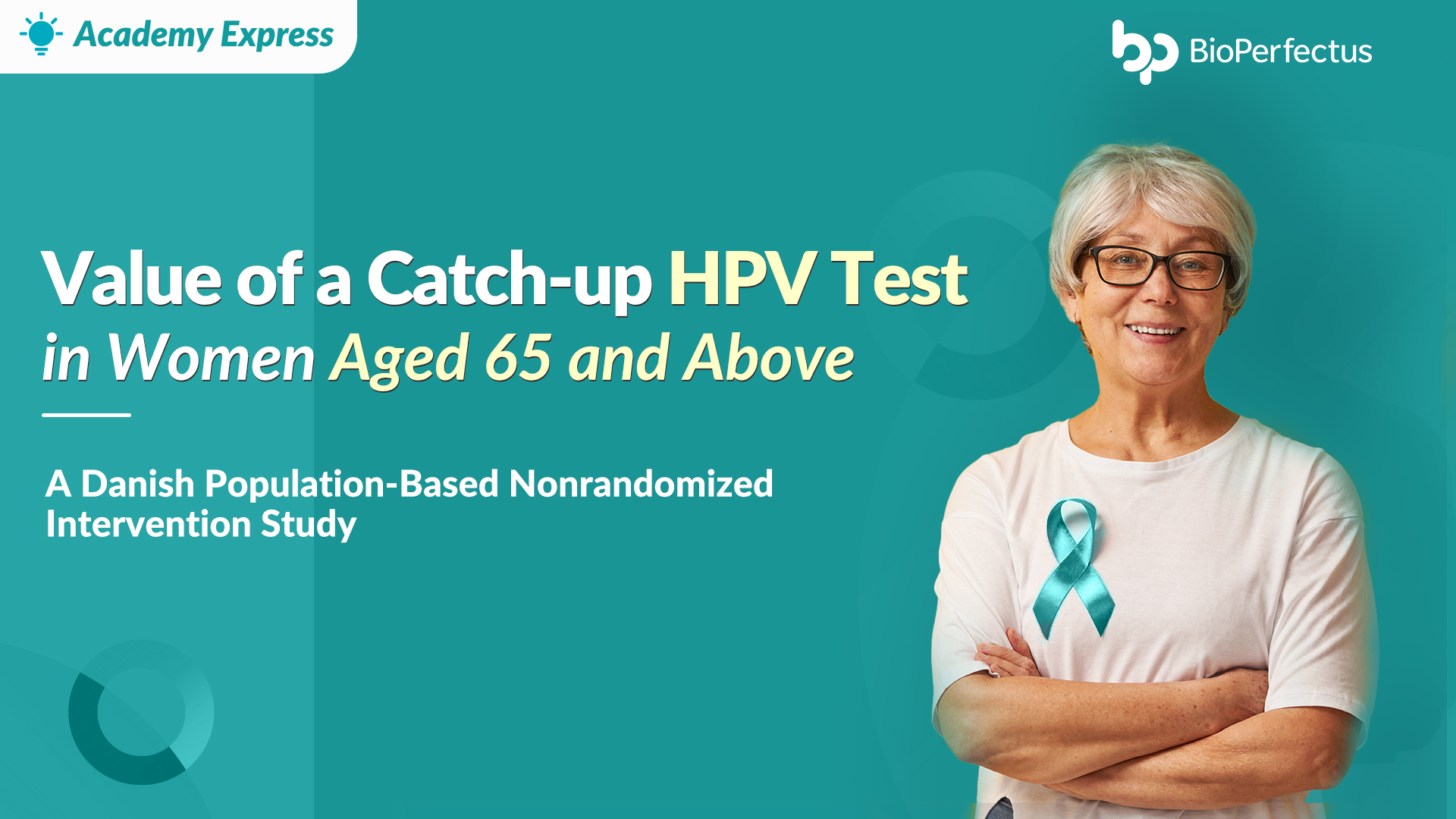
In July 2023, Mette Tranberg and others published a study titled "Value of a catch-up HPV test in women aged 65 and above: A Danish population-based nonrandomized intervention study" in the "PLOS Medicine" journal with an impact factor of 15.8. High-risk human papillomavirus (HPV) test is replacing cytology as the primary cervical cancer screening test due to superior sensitivity, but in most countries, women ≥65 years have never had an HPV test despite they account for around 50% of cervical cancer deaths. We explored the effect of a catch-up HPV test among 65- to 69-year-old women without previous records of HPV-based screening.

Ø Conclusions
The higher CIN2+ detection per 1,000 eligible women in the intervention group supports that a catch-up HPV test could potentially improve cervical cancer prevention in older women. This study informs the current scientific debate as to whether women aged 65 and above should be offered a catch-up HPV test if they never had an HPV test.
Ø Methods
This population-based nonrandomized intervention study (quasi-experimental design) included Danish women aged 65 to 69 with no record of cervical cancer screening in the last ≥5.5 years and no HPV-exit test at age 60 to 64 at the time of study inclusion. The intervention group consisted of eligible women residing in the central region of Denmark. They were invited for HPV screening either by attending clinician-based sampling or by requesting a vaginal self-sampling kit. The reference group comprised women residing in the remaining four Danish regions who received standard care which was the opportunity to have a cervical cytology collected for whatever reason.
Ø Findings
01 Characteristics of the Study Population
From a total of 45,237 women eligible, 11,369 and 33,868 were allocated to the intervention and reference groups, respectively. The median age was 68.4 and 68.5 years in the intervention and reference groups, respectively. In both groups, a majority of women (>76%) had been sufficiently screened at ages 50 to 64.

Figure 1: Study Design Flowchart

Table 1: Characteristics of the Study Population
02 Age and Screening History Classification
In the intervention group, a total of 6,965 (62.2%, 95% CI: [61.3, 63.1%]) women were tested. Of those tested, more women underwent clinician-based sampling than vaginal self-sampling (71.1%, 95% CI: [70.0, 72.2%] versus 28.9%, 95% CI: [27.8, 30.0%], p < 0.001). The proportion of tested women varied from 63.1% (95% CI: [62.0, 64.2%]) at age 68 to 69 years to 60.9% (95% CI: [59.4, 62.3%]; p = 0.02) at age 65 to 67 years. Insufficiently screened women were more likely to undergo self-sampling as compared to sufficiently screened women (52.1%, 95% CI: [47.4, 56.9%] versus 27.3%, 95% CI: [26.2, 28.4%]; p < 0.001). In the reference group, a total of 743 women (2.2%, 95% CI: [2.1, 2.4%]) had a record of a cervical sample, and most of these women underwent HPV testing (81%, 601/743).

Table 2: Age and Screening History Classification in the Intervention and Reference Groups
03 Statistics of HPV Test Results
In the intervention group, a total of 6.5% (95% CI: [6.0, 7.1%]; n = 455) were HPV–positive (Table 3). The HPV prevalence decreased with age from 7.3% (95% CI: [6.3, 8.4%]) at age 65 to 67 to 6.1% (95% CI: [5.4, 6.8%]; p = 0.05) at age 68 to 69. The HPV prevalence was higher in vaginal self-samples (8.0%, 95% CI: [6.9, 9.3%]) compared to clinician-collected cervical samples (5.9%, 95% CI: [5.2, 6.6%]; p < 0.001). Insufficiently screened women had higher HPV prevalence (11.5%, 95% CI: [8.7, 14.9%]) as compared to sufficiently screened women (6.2%, 95% CI: [5.6, 6.8%]; p < 0.001).

Table 3: HPV Test Results
04 Histological Results and Frequency of Vaginoscopy Examinations
Of the 6,965 HPV-tested women in the intervention group; 357 women (5.1%) had histology results registered during follow-up, 275 among HPV–positive and 82 among HPV–negative. In the intervention group, the percentage of CIN2+ lesions diagnosed was higher in insufficiently screened (1.4%, 95% CI: [0.5, 2.9%]; p = 0.05; n = 6/443) but not statistically different from the percentage diagnosed among sufficiently screened (0.6%, 95% CI: [0.4, 0.8%]; n = 38/6,522). The number of CIN3+ lesions diagnosed was significantly higher in the intervention group (2.3 per 1,000 eligible women; 95% CI: [1.5, 3.4]; p < 0.001) as compared to the reference group (0.2 per 1,000 eligible women; 95% CI: [0.1, 0.4]). For the harm–benefit ratio, 11.6 (95% CI: [8.5, 15.8]; p = 0.69) and 19.6 (95% CI: [13.2, 29.2]; p = 0.62) colposcopies were performed to detect one CIN2 + and CIN3+, respectively, in the intervention group as compared to 10.1 (95% CI: [5.4, 18.8]) and 15.8 (95% CI: [7.4, 34.0]) colposcopies in the reference group.

Table 4: Histological Results and Frequency of Vaginoscopy Examinations for Detected CIN2+/CIN3+ Cases in the Intervention and Reference Groups
This study suggests that additional HPV screening for women aged 65 and above could be an effective strategy to enhance cervical cancer prevention. However, longer-term follow-up is needed to observe whether the intervention can reduce cervical cancer mortality. Vaginal self-sampling proves to be a valuable tool, aiding in the identification of older women at risk of cervical cancer who may have inadequate screening.
Reference:
Tranberg M, Petersen LK, Hammer A, Elfström M, Blaakær J, Jørgensen SF, Bennetsen MH, Jensen JS, Andersen B. Value of a catch-up HPV test in women aged 65 and above: A Danish population-based nonrandomized intervention study. PLoS Med. 2023 Jul 6;20(7):e1004253. doi: 10.1371/journal.pmed.1004253. PMID: 37410699; PMCID: PMC10325045.

